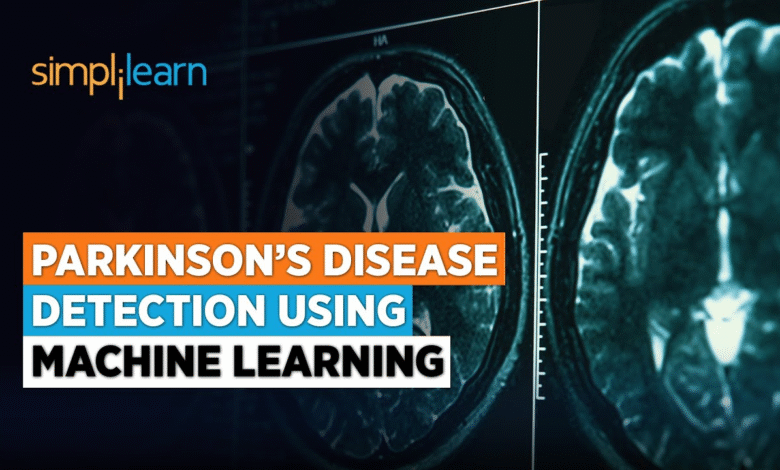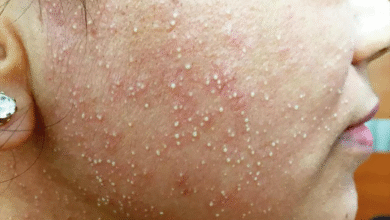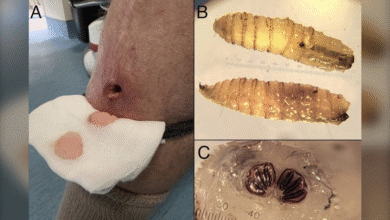Parkinson’s Disease Detection: The Role of Ear Wax Analysis

Parkinson’s disease detection is evolving, offering promising avenues for early diagnosis through innovative research. Recent studies highlight the compelling link between ear wax and early indications of Parkinson’s, suggesting that the unique volatile organic compounds (VOCs) produced may be crucial biomarkers for the disease. These compounds, which are characteristic of individuals with Parkinson’s, could revolutionize the way health professionals identify early Parkinson’s symptoms, enabling timely intervention. With advancements such as AI in Parkinson’s diagnosis, detecting this progressive neurological disorder may soon become as simple as analyzing ear wax samples, thereby enhancing accuracy and efficiency in clinical settings. The potential for utilizing everyday biological materials as diagnostic tools represents a significant leap towards new strategies in managing Parkinson’s disease.
The detection of Parkinson’s disease, sometimes referred to as identifying early signs of PD, is gaining traction with novel methodologies in the medical community. Researchers are investigating how biological substances like ear wax can act as indicators of this neurodegenerative disease, with particular focus on the specific chemical signatures present in patients. Terms such as ‘biomarkers for Parkinson’s’ and ‘early Parkinson’s symptoms’ are becoming more prevalent as science delves deeper into the mechanisms behind this disorder. The integration of artificial intelligence in diagnosing Parkinson’s offers a transformative approach, helping clinicians pinpoint the condition sooner and improve patient outcomes significantly. Embracing these emerging technologies may well change the landscape of how we understand and detect Parkinson’s disease.
Understanding Parkinson’s Disease Detection Through Ear Wax
Recent research indicates that ear wax may hold the key to early detection of Parkinson’s disease (PD). Unlike traditional diagnostic methods that primarily focus on observable Parkinson’s symptoms like tremors and rigidity, this innovative approach highlights the importance of volatile organic compounds (VOCs) emitted by the ear wax of individuals with the disease. These specific VOCs can be indicative of underlying systemic conditions related to neurodegeneration, thus providing a compelling case for their use as biomarkers in Parkinson’s disease detection.
The study analyzed samples from participants and identified key VOCs such as ethylbenzene and pentanal, which differed significantly between those diagnosed with Parkinson’s and those without. This finding opens a new frontier in PD diagnosis, suggesting that smell-based detection methods could not only simplify the screening process but also enable earlier interventions for those at risk. As this field of study progresses, we may see ear wax analysis becoming a common practice in identifying early Parkinson’s symptoms amongst patients.
Frequently Asked Questions
What is the significance of ear wax in Parkinson’s disease detection?
Recent studies suggest that ear wax may play a crucial role in Parkinson’s disease detection, as it contains volatile organic compounds (VOCs) that differ between individuals with and without the disease. These VOCs can potentially serve as biomarkers for early diagnosis, providing a non-invasive screening method.
How do VOCs relate to Parkinson’s disease detection?
Volatile organic compounds (VOCs) found in ear wax are linked to systemic inflammation and neurodegeneration associated with Parkinson’s disease. Research indicates that specific VOCs can be markedly different in those with Parkinson’s, making them promising indicators for early detection.
What are the early symptoms of Parkinson’s disease, and how can they be detected?
Early Parkinson’s symptoms include tremors, rigidity, bradykinesia, and changes in gait. Advances in Parkinson’s disease detection, such as analyzing ear wax for unique VOCs, could help identify these symptoms sooner and facilitate earlier intervention.
Are there any established biomarkers for Parkinson’s disease?
Current research has identified potential biomarkers for Parkinson’s disease, particularly through the analysis of ear wax for specific VOCs such as ethylbenzene, 4-ethyltoluene, pentanal, and 2-pentadecyl-1,3-dioxolane. These findings could lead to improved diagnostic methods.
Can artificial intelligence assist in Parkinson’s disease diagnosis?
Yes, artificial intelligence (AI) has shown promise in Parkinson’s disease diagnosis. A recent study demonstrated that an AI olfactory system could accurately detect VOCs in ear wax samples, suggesting its potential as a first-step screening tool for early Parkinson’s detection.
What are the limitations of current Parkinson’s disease detection methods?
Current methods for Parkinson’s disease detection, such as imaging studies and clinical rating scales, tend to be costly and subjective. The emerging ear wax analysis method utilizing VOC profiles offers a potentially simpler and cheaper alternative, though further research is needed.
How can I assess my risk of developing Parkinson’s disease?
If you’re concerned about your risk for Parkinson’s disease, consulting a neurologist or movement disorder specialist is recommended. They can screen for early warning signs and determine if further diagnostic testing is necessary.
What advancements are being made in non-invasive Parkinson’s disease detection?
Research into using ear wax analysis for detecting Parkinson’s disease represents a significant advancement in non-invasive methods. This innovative approach, highlighting VOCs as potential biomarkers, could lead to earlier diagnosis and treatment options.
| Key Points |
|---|
| Ear wax odor may indicate early Parkinson’s disease detection. |
| Research suggests volatile organic compounds (VOCs) in ear wax have a distinct scent linked to Parkinson’s disease. |
| Four key VOCs identified: ethylbenzene, 4-ethyltoluene, pentanal, and 2-pentadecyl-1,3-dioxolane. |
| Artificial intelligence olfactory (AIO) system shows 94% accuracy in detecting Parkinson’s from ear wax samples. |
| Potential to use AIO as a first-line screening tool for early Parkinson’s detection, allowing timely treatment. |
| Current methods for diagnosis are subjective and expensive; this method could provide an inexpensive alternative. |
| Further research needed on diverse populations and disease stages to confirm effectiveness of the new method. |
| Consultation with a neurologist is advised for individuals concerned about Parkinson’s risk. |
Summary
Parkinson’s disease detection has taken a promising turn with recent research indicating that the odor emitted from ear wax could serve as an early warning sign. This groundbreaking study identifies specific volatile organic compounds that differ in Parkinson’s patients, suggesting the possibility of creating an effective screening tool. By harnessing the capabilities of artificial intelligence, clinicians could accurately detect Parkinson’s disease at earlier stages, paving the way for timely and potentially more effective treatment options. As further research is conducted, this novel approach could transform how we identify and manage Parkinson’s disease, shifting the focus towards early intervention and better quality of life for those affected.




